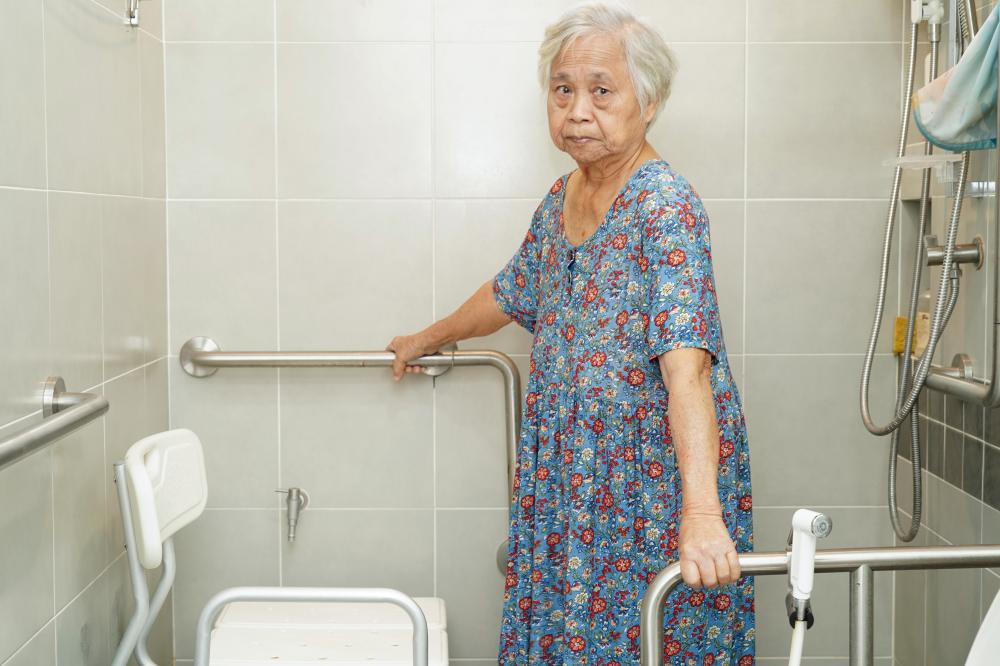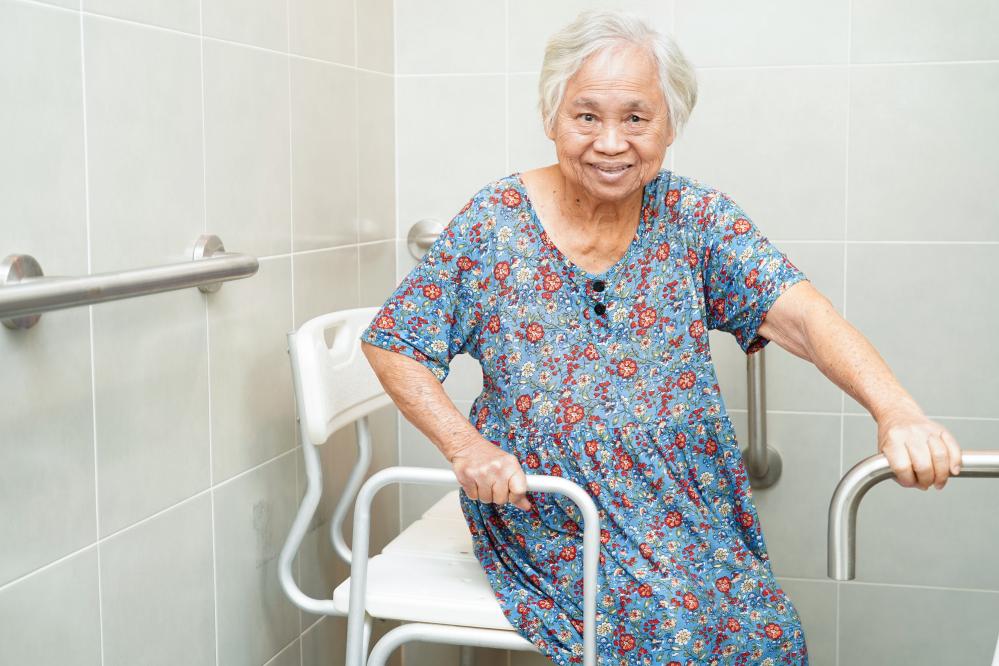
Understanding Back Support for the Elderly
At Senior Care Nation, our mission is to guide seniors through the myriad of health and wellness options available today. One area of particular importance is back support for elderly individuals. The right support can drastically improve quality of life, offering comfort and reducing pain. In this article, we share insights and professional experiences on back support for the elderly, aiming to inform and empower our community members with the knowledge they need.
The Importance of Back Support
Why is back support for elderly so crucial? As we age, our bodies undergo various changes that can affect posture, flexibility, and strength. These changes can lead to discomfort and back pain, making daily activities challenging. Proper back support helps alleviate this pain, supports correct posture, and enhances mobility, allowing seniors to maintain an active and independent lifestyle.
Types of Back Supports Available
For those seeking back support for elderly, the market offers several options:
- Adjustable Chairs: Designed for comfort and support, these chairs can be modified to fit the unique shape and needs of the user.
- Back Braces: These are useful for providing additional spine support, especially after an injury or surgery.
- Lumbar Cushions: Portable and versatile, lumbar cushions offer support to the lower back and can be used in various seating scenarios.
- Supportive Mattresses: A good night’s sleep is crucial, and supportive mattresses ensure the spine is properly aligned throughout the night.
Considerations When Choosing Back Support
Selecting the right back support for elderly requires understanding their specific needs and lifestyle. Here are some key factors to consider:
- Comfort: The back support should provide relief and be comfortable for extended use.
- Adaptability: Flexible options that adapt to various sitting or sleeping positions are ideal.
- Material: Breathable, high-quality materials ensure comfort and durability.
- User Mobility: Consider the user’s ability to move independently when selecting a product.
Exercises and Therapies for Back Support
Beyond physical products, exercises and therapies play a vital role in maintaining a healthy back. Physical therapy, guided by a professional, can strengthen back muscles and improve flexibility. Exercises like walking, swimming, and yoga are also beneficial, promoting overall wellness and back health. Regular movement and stretching are crucial for keeping the back strong and supple, helping to prevent pain and injuries.
Personalizing Back Care
At Senior Care Nation, we understand that every individual has unique needs. Personalizing back care is essential for effective support and comfort. This might mean combining different types of back supports or incorporating specific exercises advised by health professionals. Listening to the body and making adjustments as necessary ensures the best possible care for back health.
Testimonials and Stories
Our community members often share their experiences and successes with various back support products and strategies. These personal stories can offer valuable insights and inspire others to find solutions that work for them. Whether it’s a lumbar cushion that made long car rides enjoyable again or a back brace that provided the necessary support post-surgery, these testimonials highlight the importance of finding the right back support solution.
Innovative Solutions for Back Support
The world of back support for elderly is ever-evolving, with new technologies and products regularly entering the market. From wearables that remind users to correct their posture, to mattresses designed using cutting-edge materials for optimal spinal alignment, innovation continues to drive improvements in back support options. At Senior Care Nation, we’re always on the lookout for these advancements, aiming to bring our community the very latest and most effective solutions.
Working with Professionals
While personal research and recommendations are valuable, consulting with healthcare professionals is key to addressing back issues effectively. A professional can offer a tailored approach, consider medical history, and recommend the most appropriate back support solutions. Physical therapists, chiropractors, and orthopedic specialists are excellent resources for anyone experiencing back pain or seeking preventive back care.
In conclusion, back support for elderly is a multifaceted issue that requires careful consideration and a personalized approach. At Senior Care Nation, our aim is to empower seniors with the information and resources they need to make informed decisions about their back health. Whether through innovative products, exercises, or professional guidance, there are numerous ways to support and enhance back health for a comfortable and active lifestyle.

Can a back brace help elderly?
Yes, a back brace can be a vital tool for elderly individuals, especially those dealing with back pain or recovering from surgery. By providing extra support to the spine and surrounding muscles, a back brace can help improve posture, reduce pain, and promote healing. It’s like having a helping hand that’s always there to remind you to keep your spine aligned. Remember, though, it’s crucial to consult with a healthcare professional to ensure the brace is used correctly and to determine if it’s the right option for your specific situation. Additionally, wearing a back brace should be part of a comprehensive approach that includes exercises to strengthen the back and improve flexibility.
What helps back pain in elderly?
Back pain in elderly individuals can often be managed through a combination of methods. Physical therapy is a cornerstone, as it can strengthen back muscles, enhance flexibility, and improve posture, all key components in alleviating pain. Additionally, staying active with low-impact exercises like walking, swimming, or yoga can make a huge difference. It’s also important to pay attention to ergonomics and make sure that daily activities and resting positions support spine health. Don’t forget the power of heat and cold therapies for pain relief, and always consider consulting with a healthcare professional to tailor a back pain management plan that’s right for you.
What to do when your back hurts so bad you can’t move?
When you’re experiencing severe back pain to the point of immobility, the first step is to seek immediate, gentle relief. Try to carefully adjust your position to a comfortable posture, whether lying down or reclining, to alleviate stress on your back. Applying heat or cold to the affected area might also help soothe the pain temporarily. However, it’s essential to consult with a healthcare professional as soon as possible to understand the root cause and receive appropriate treatment. Remember, severe back pain is your body telling you something is wrong, so it’s crucial to listen and act accordingly, not just mask the symptoms.
How do you live with severe lower back pain?
Living with severe lower back pain is challenging, but there are ways to manage it and maintain a good quality of life. Start by adopting a proactive approach to pain management, which includes regular physical therapy, tailored exercises, and possibly medication under a doctor’s supervision. It’s also important to modify your lifestyle to support your back better — think ergonomic furniture, supportive shoes, and tools to help with daily tasks. Learning stress management techniques and exploring complementary therapies, such as acupuncture or massage, can provide additional relief. And always keep communication open with your healthcare provider to adjust your pain management plan as needed.
Are lumbar cushions effective for the elderly?
Lumbar cushions can be incredibly effective for elderly individuals by providing essential support to the lower back, thus encouraging better posture and reducing strain. These cushions are designed to fit the natural curve of the spine, offering comfort and relief during prolonged periods of sitting. Whether it’s for use in a favorite chair, during a long car ride, or at the dining table, a lumbar cushion can make a noticeable difference. However, it’s worth noting that while lumbar cushions offer support, they should be used in combination with a holistic approach to back care, including physical activity and proper ergonomics in daily life.
How can physical therapy improve back health in the elderly?
Physical therapy plays a critical role in improving back health for the elderly by addressing the root causes of pain and discomfort. A physical therapist can develop a personalized exercise program aimed at strengthening the back muscles, increasing flexibility, and enhancing posture. These exercises help stabilize the spine, reduce pain, and improve mobility, making daily activities easier and less painful. Moreover, physical therapy sessions provide valuable education on proper body mechanics and lifestyle adjustments that support back health, empowering elderly individuals to take an active role in managing their back care.
What role does diet play in managing back pain for the elderly?
Diet plays a surprisingly significant role in managing back pain, as it can influence inflammation levels, body weight, and overall health. Consuming a diet rich in anti-inflammatory foods, such as leafy greens, berries, nuts, and fatty fish, can help reduce inflammation and alleviate some pain symptoms. Additionally, maintaining a healthy weight reduces the strain on the back and can prevent further pain. It’s also important to stay hydrated, as this can help maintain the health of spinal discs. Incorporating dietary changes as part of a comprehensive approach to back pain management can offer additional relief and support overall wellness in the elderly.
Resources for Back Support for the Elderly
- National Institute on Aging (NIA) – The NIA provides valuable information on aging and health, including resources on back support for the elderly.
- Administration on Aging (AoA) – The AoA offers resources and programs that support older individuals, including information on back support options.
- Spine-Health – Spine-Health is a trusted source of information on spine health, offering insights on back support products and therapies.
- Mayo Clinic – The Mayo Clinic provides expert advice on back health, including tips on choosing the right back support for elderly individuals.
- Centers for Disease Control and Prevention (CDC) – The CDC offers resources on aging and health, including information on back support and injury prevention for seniors.

